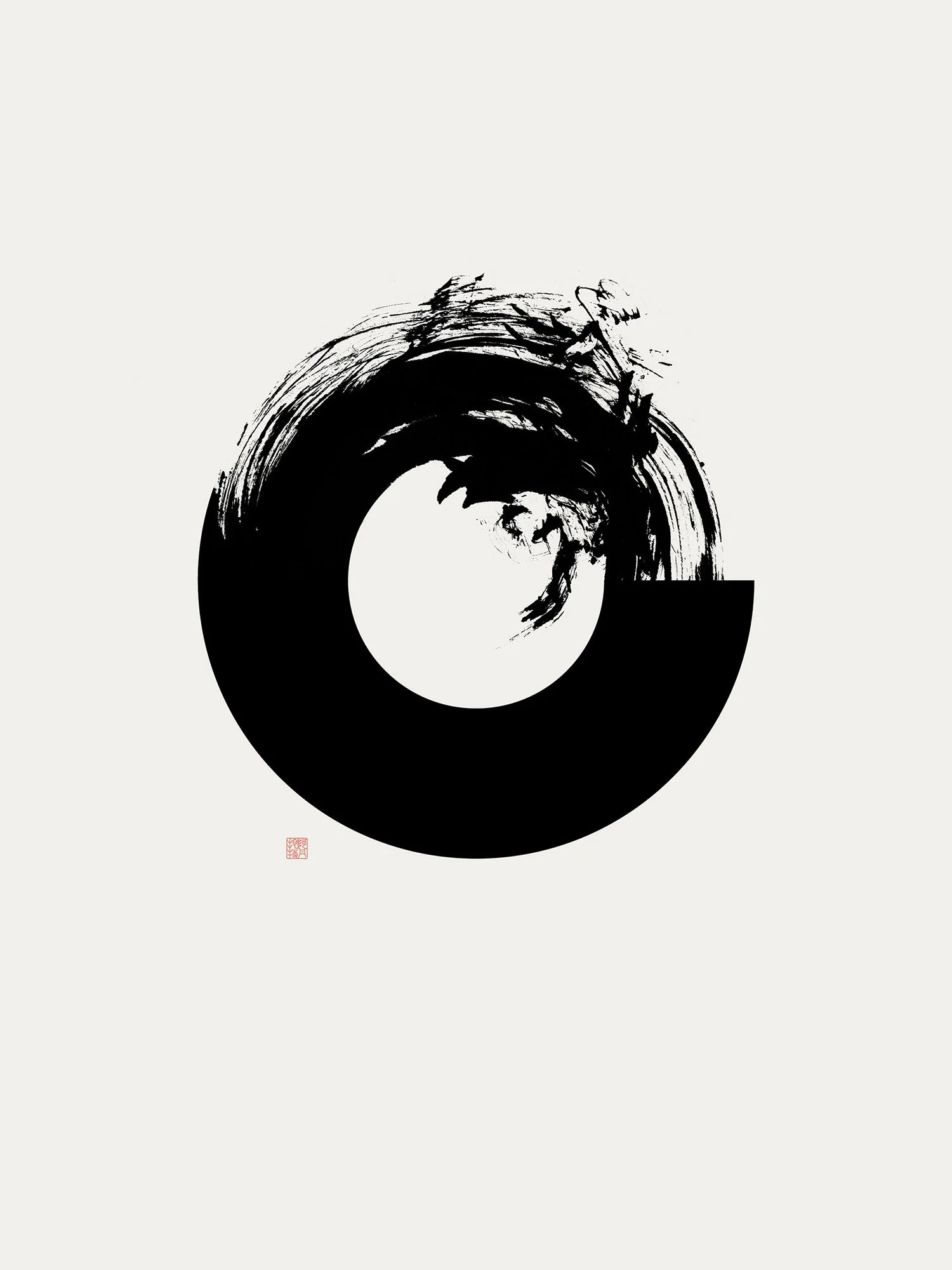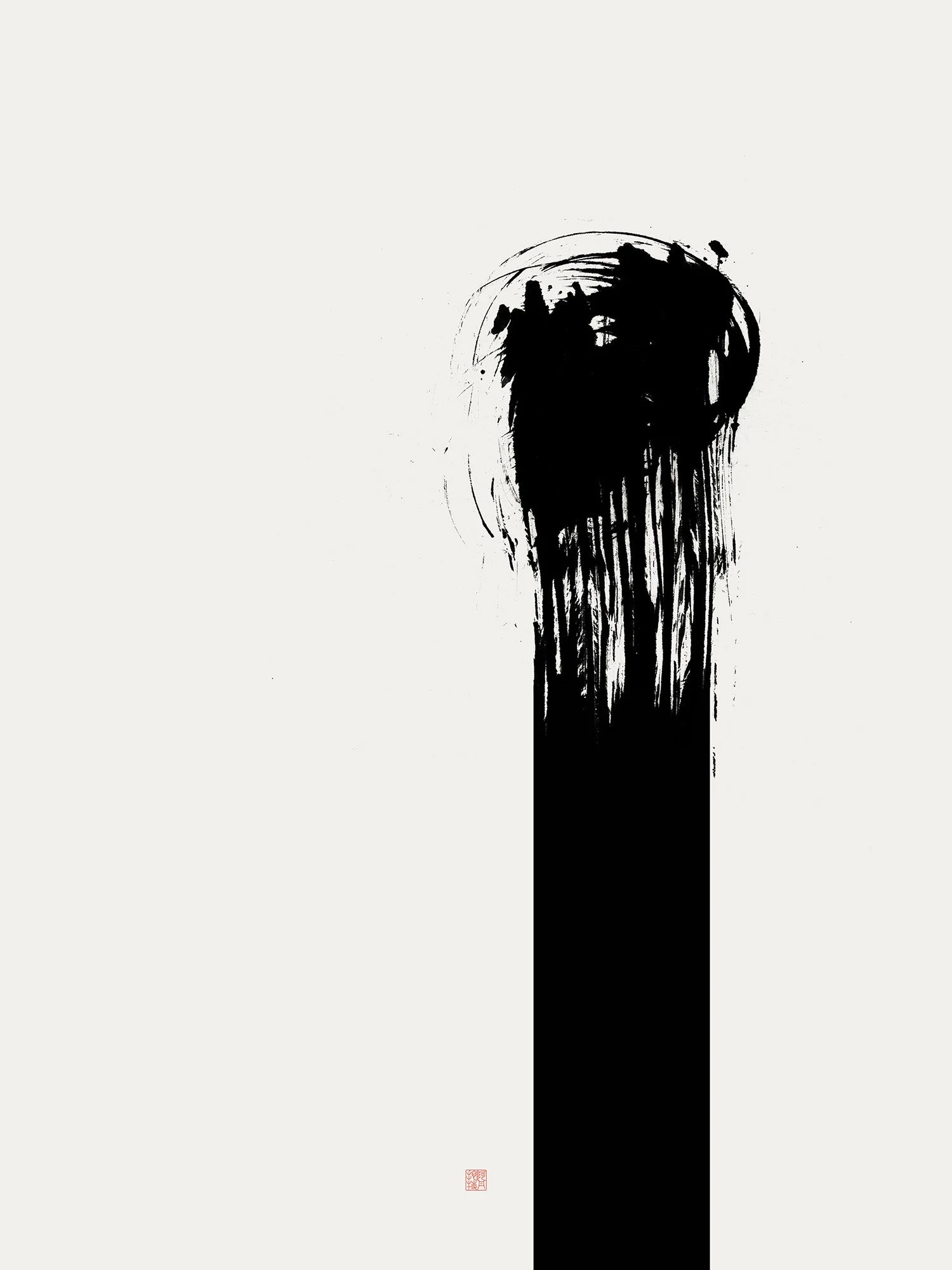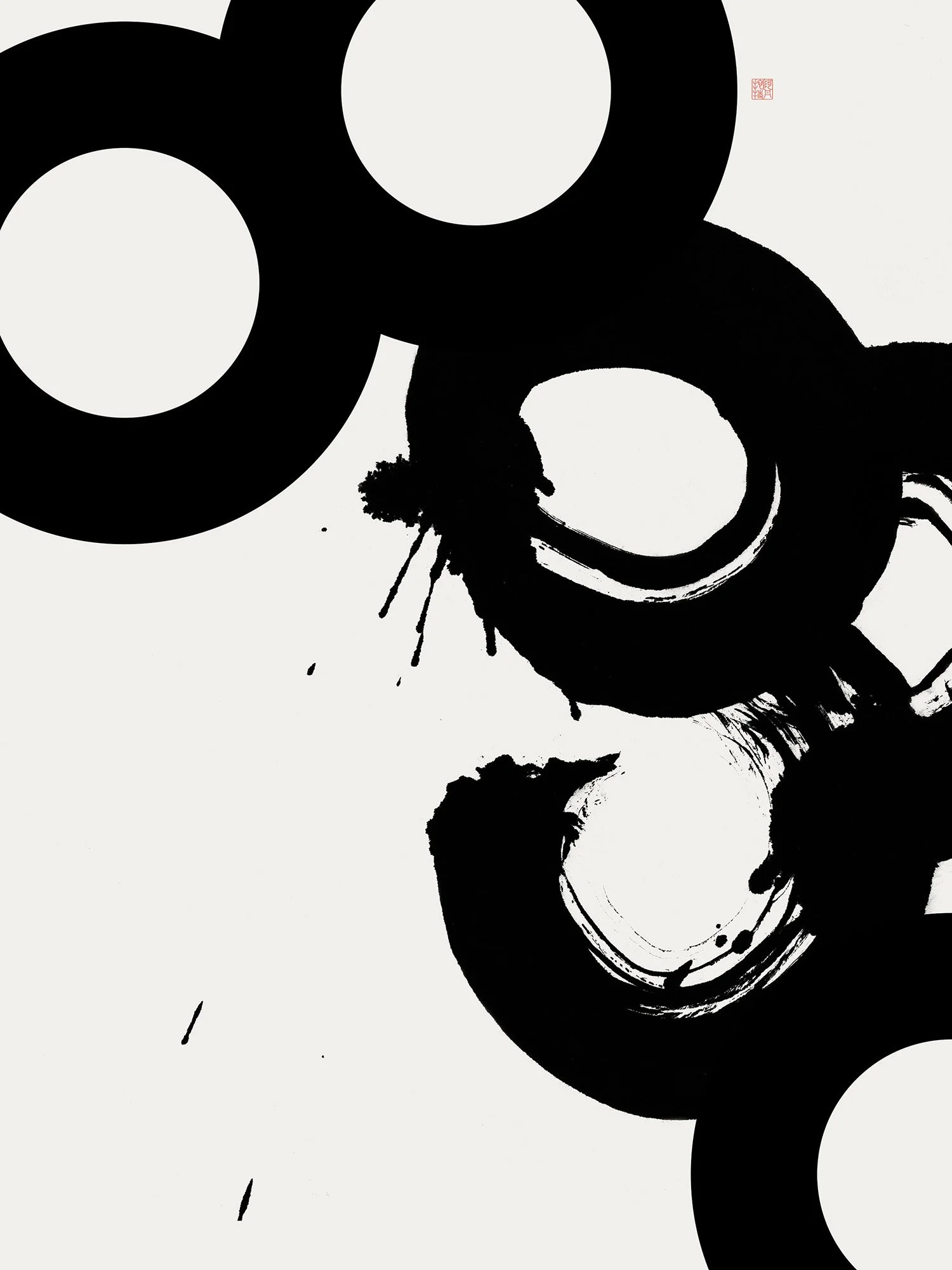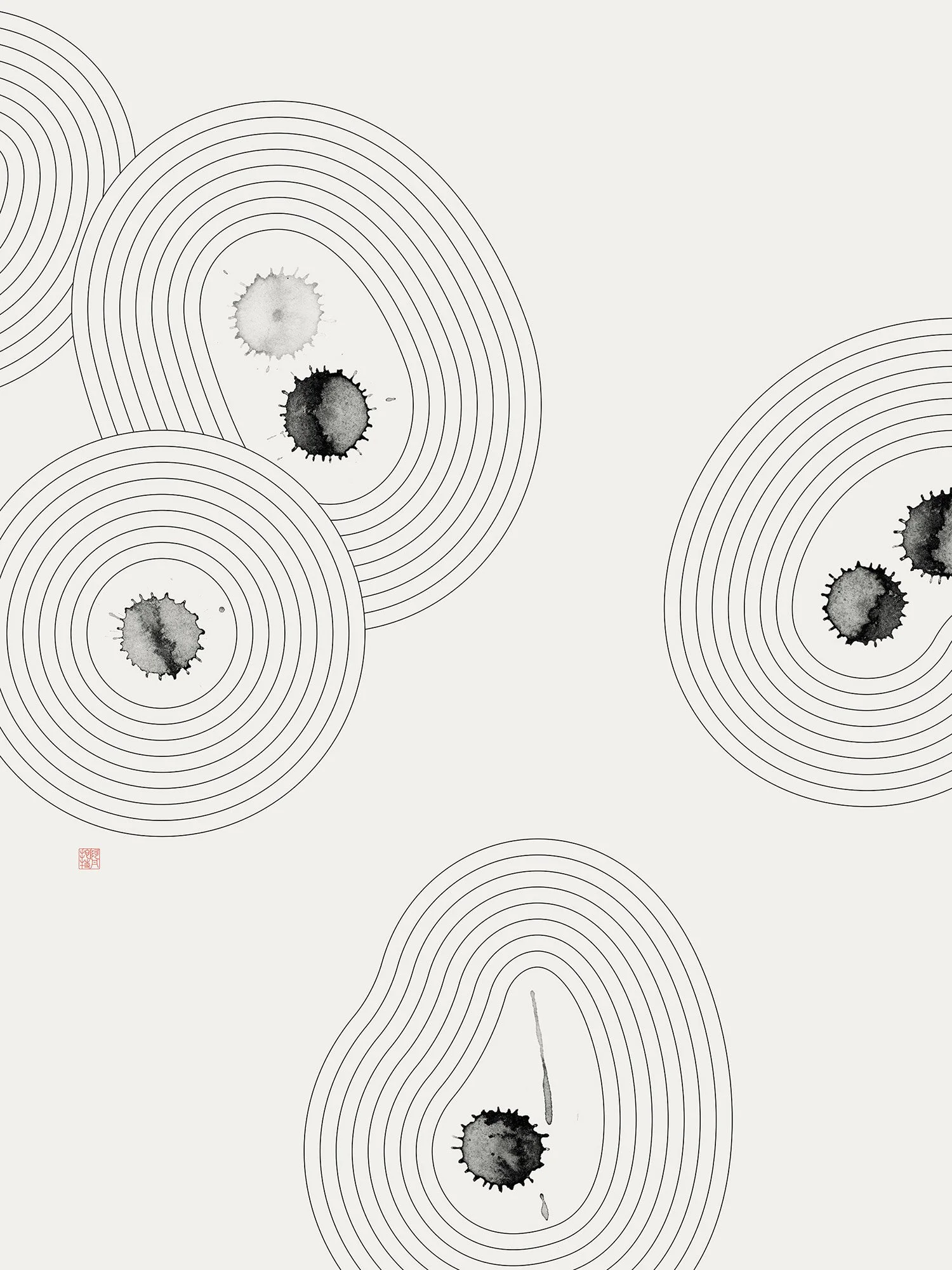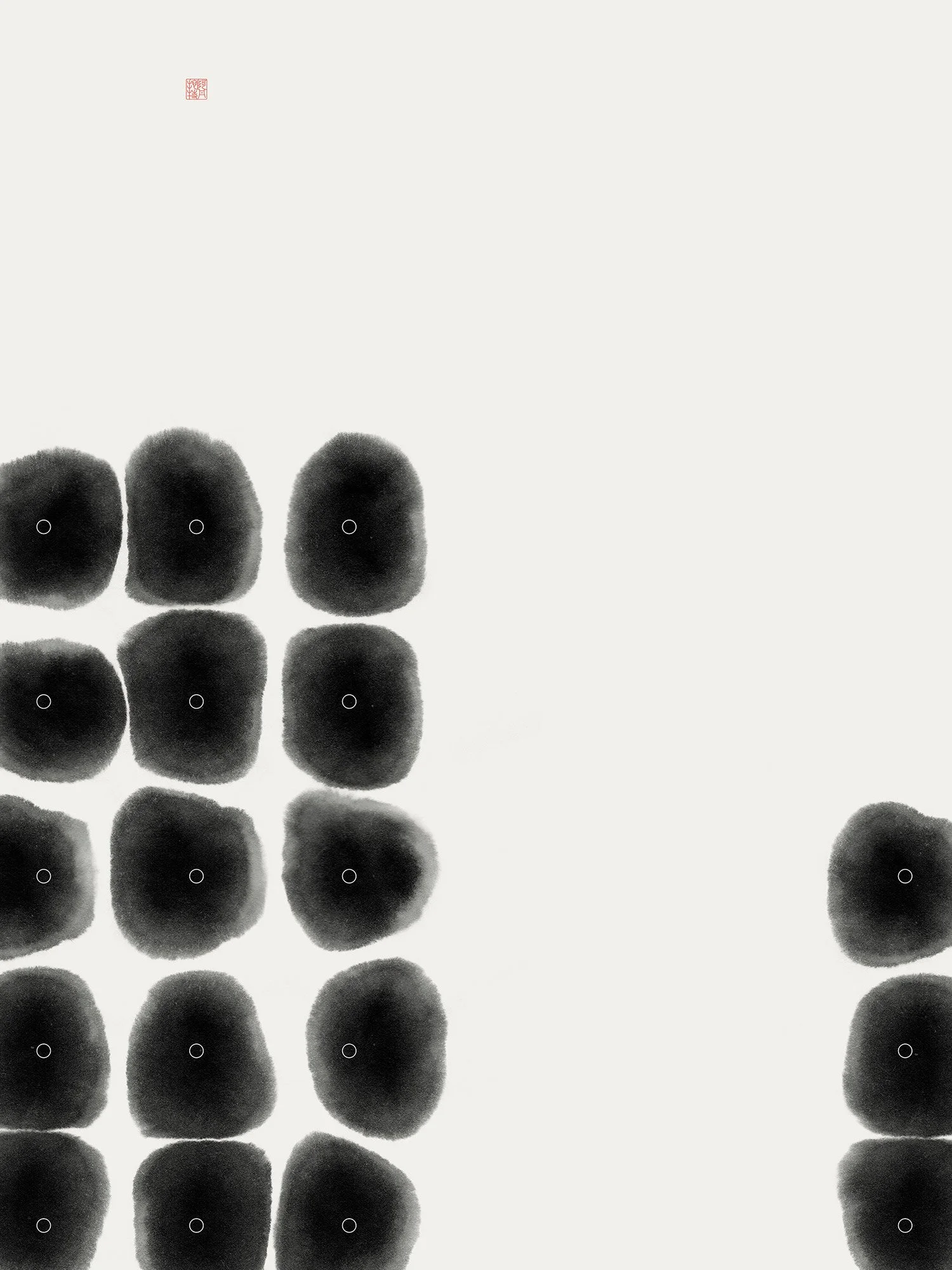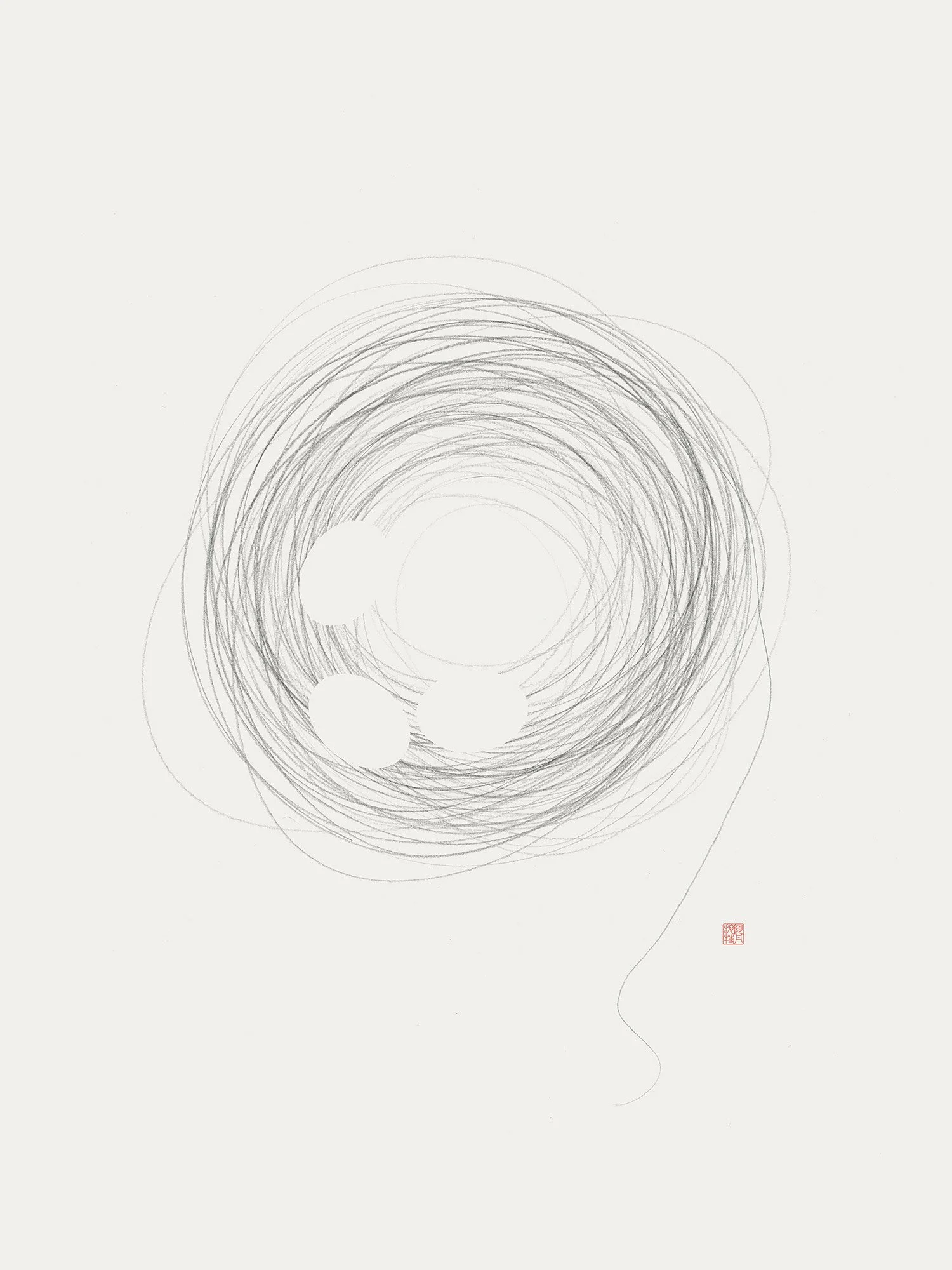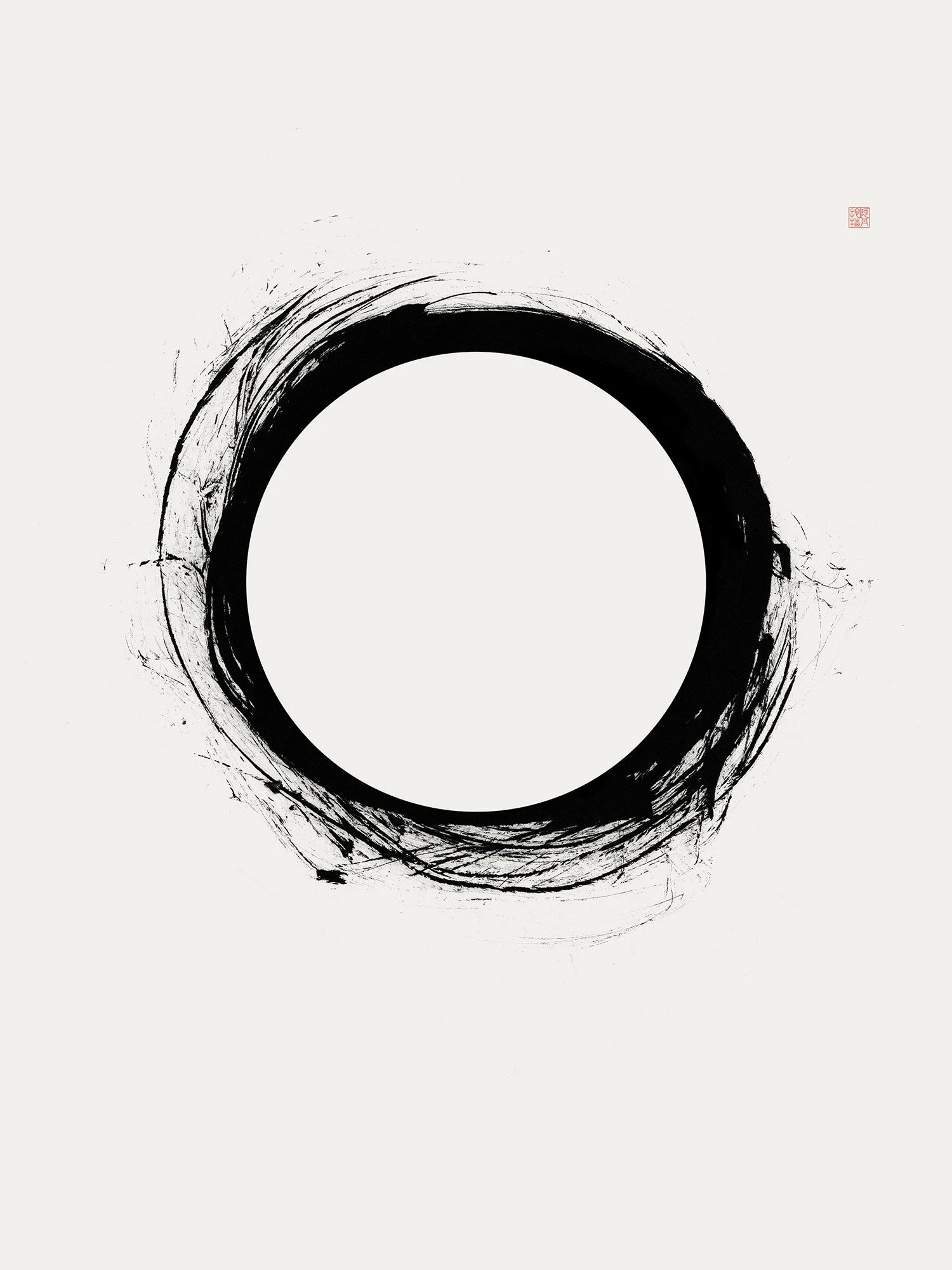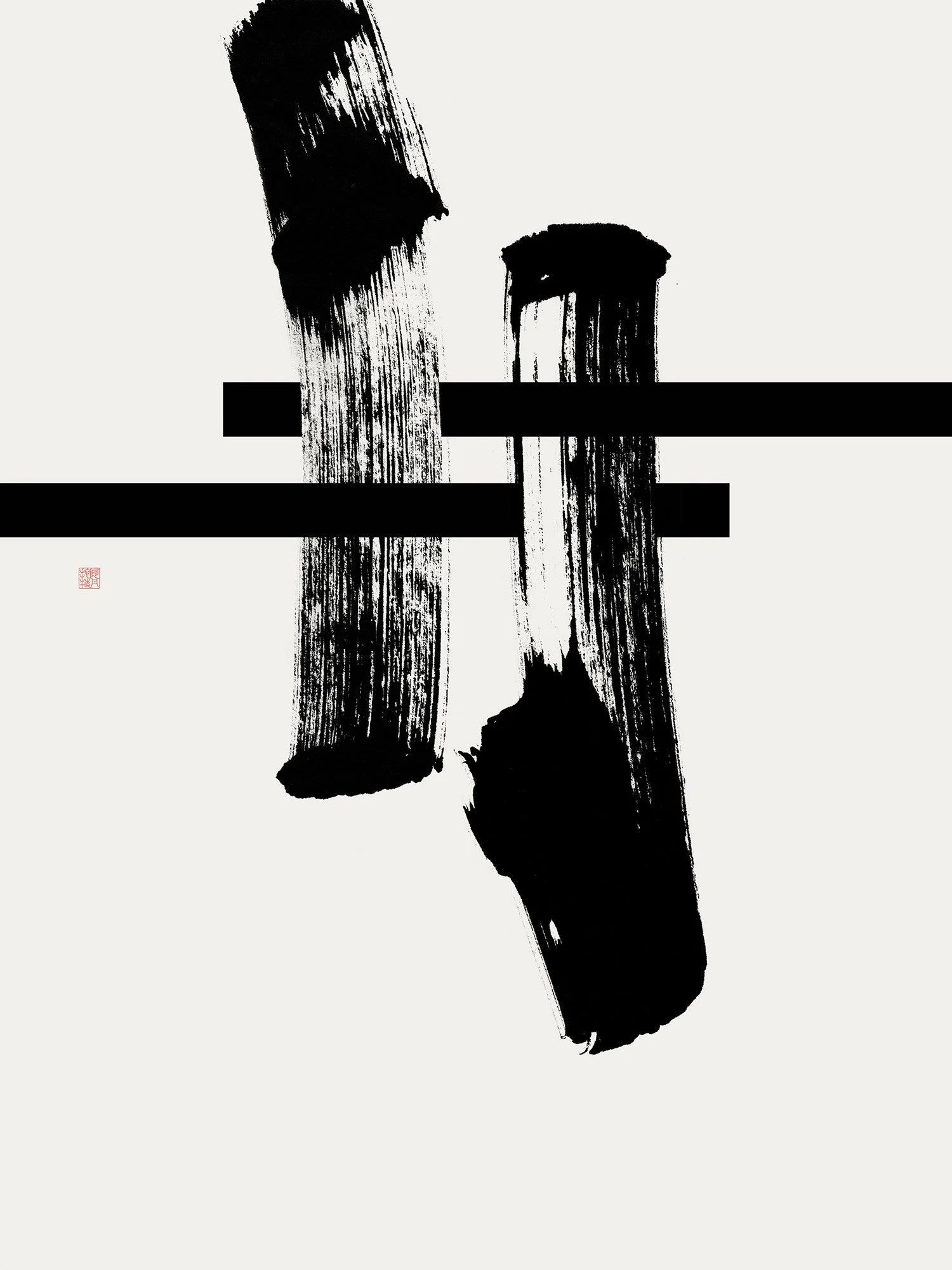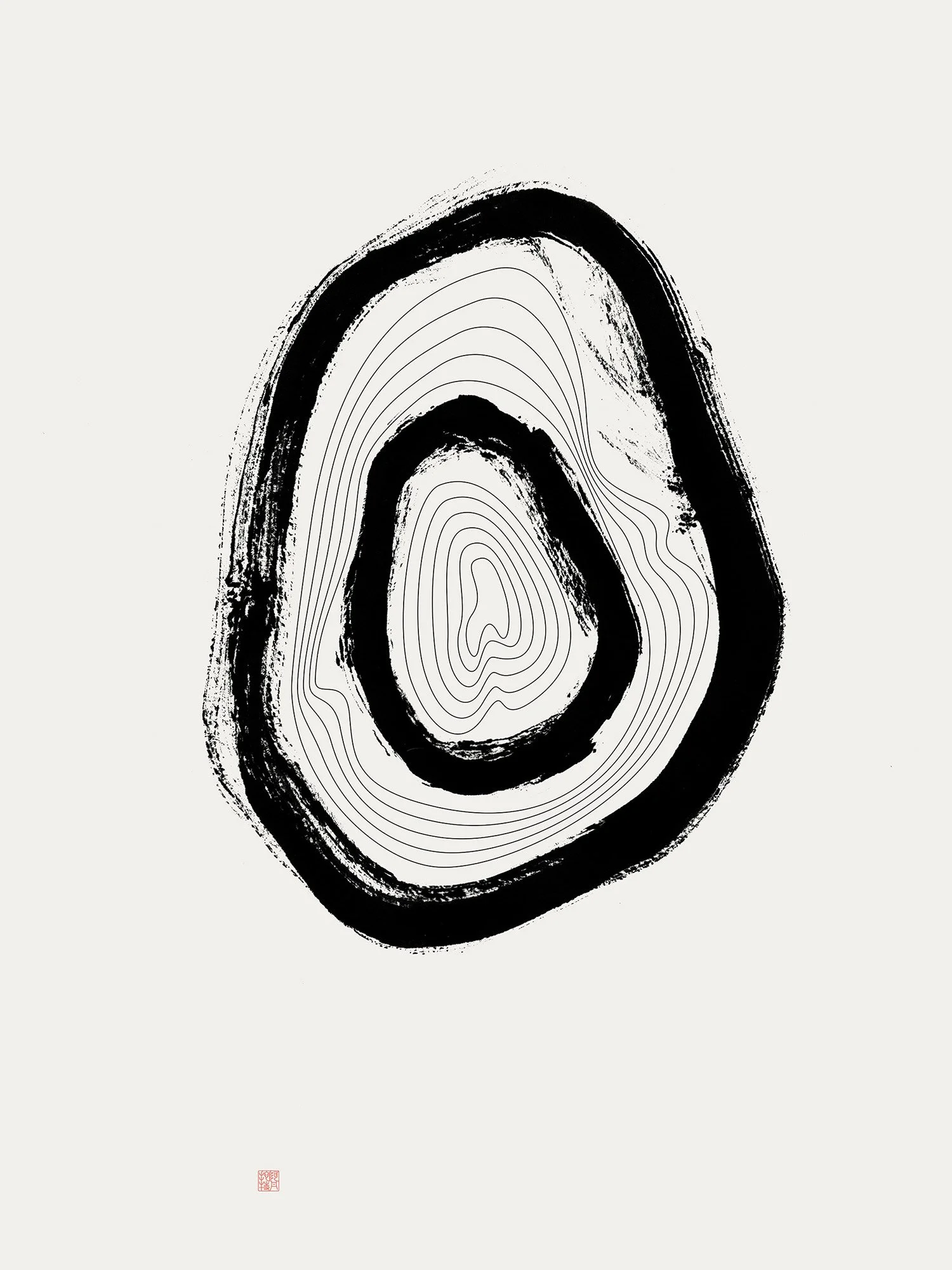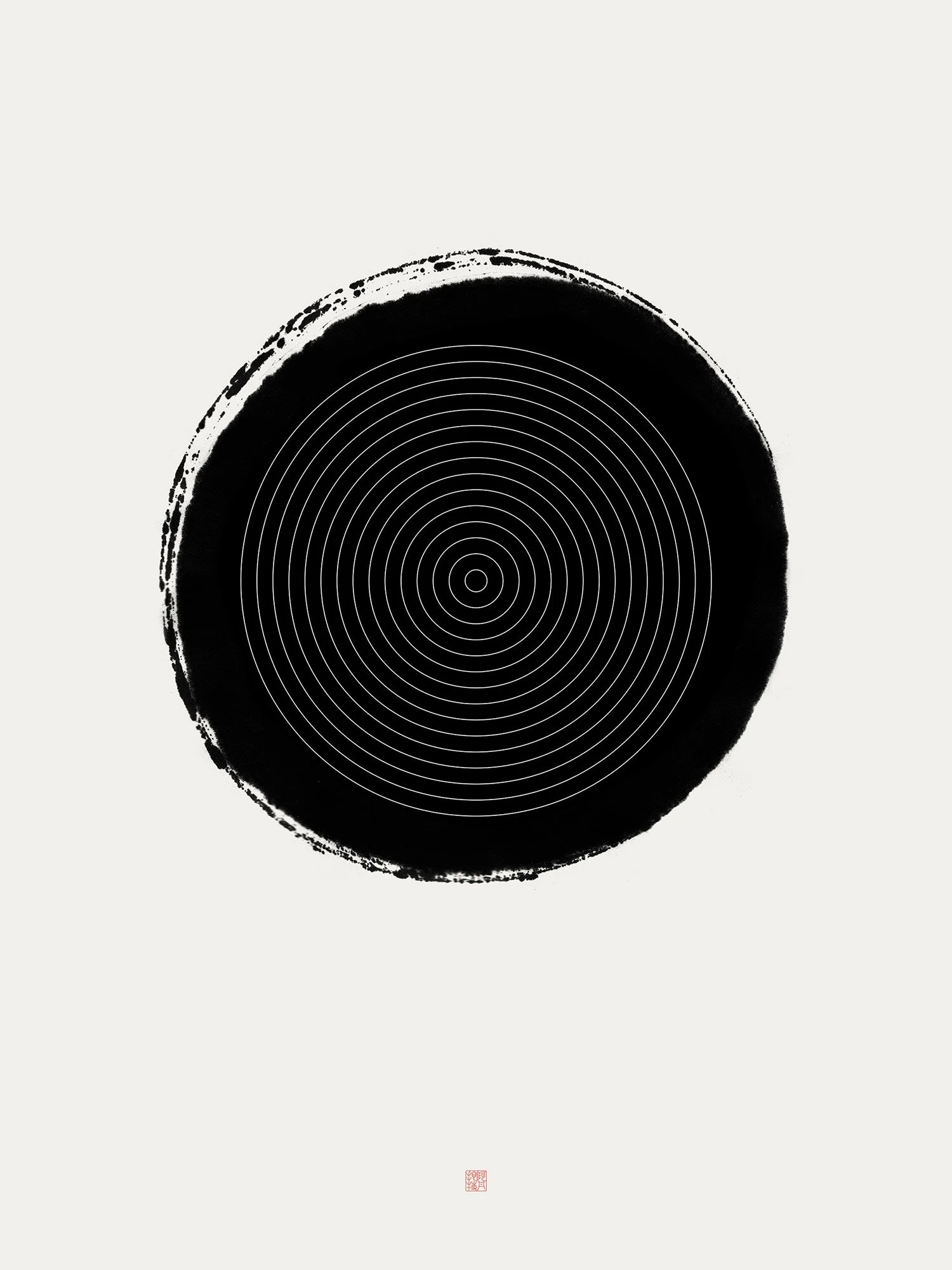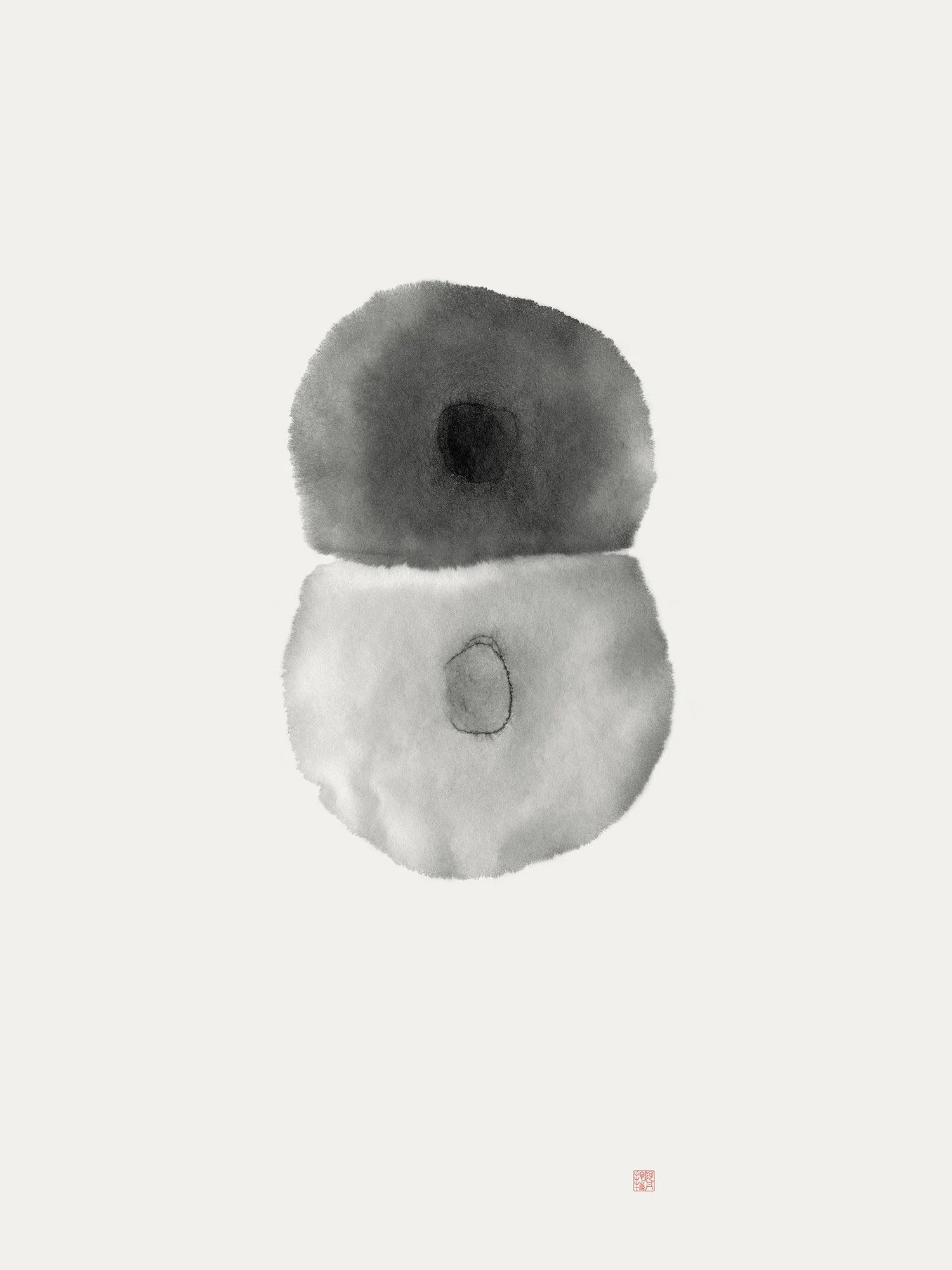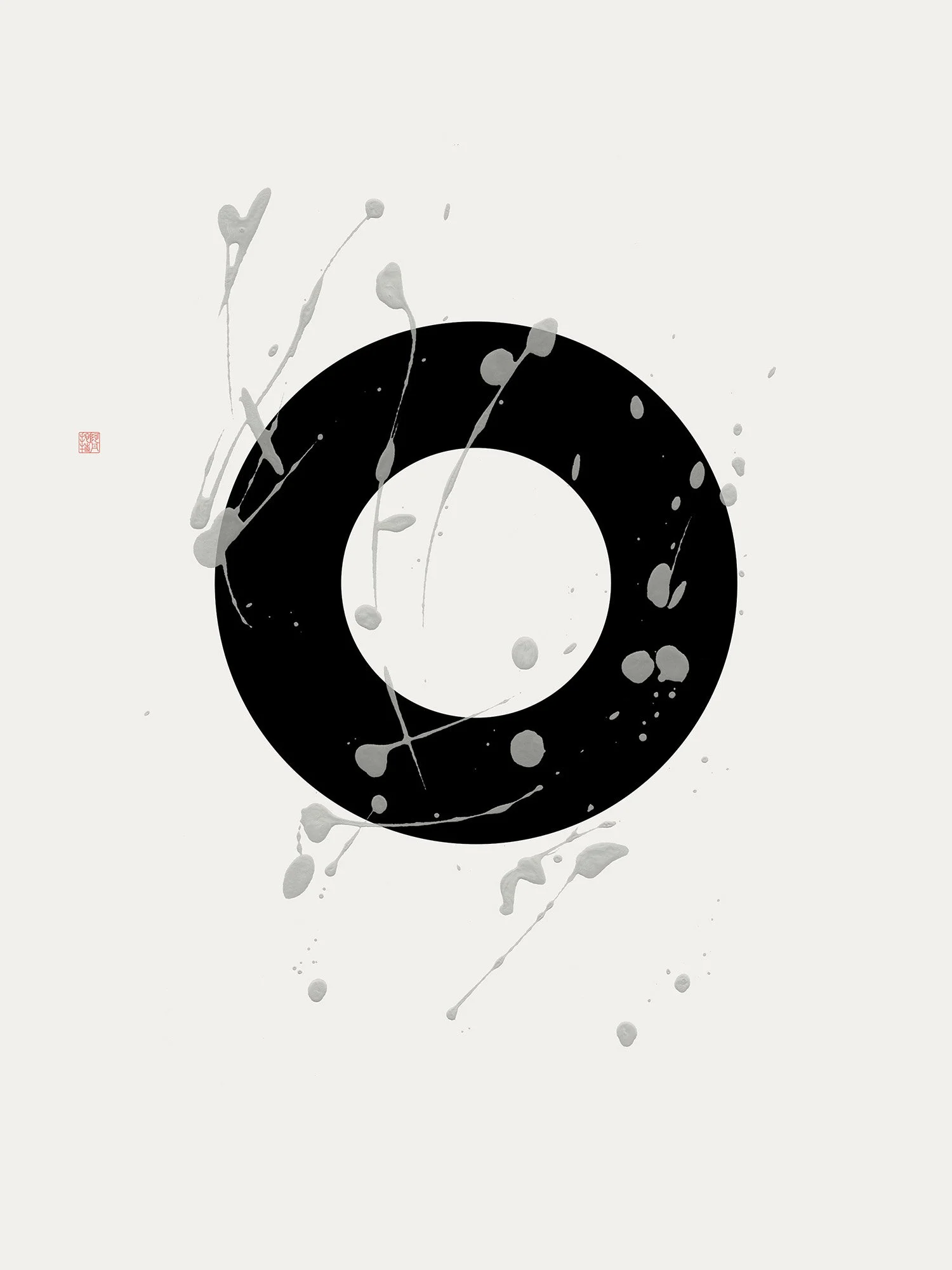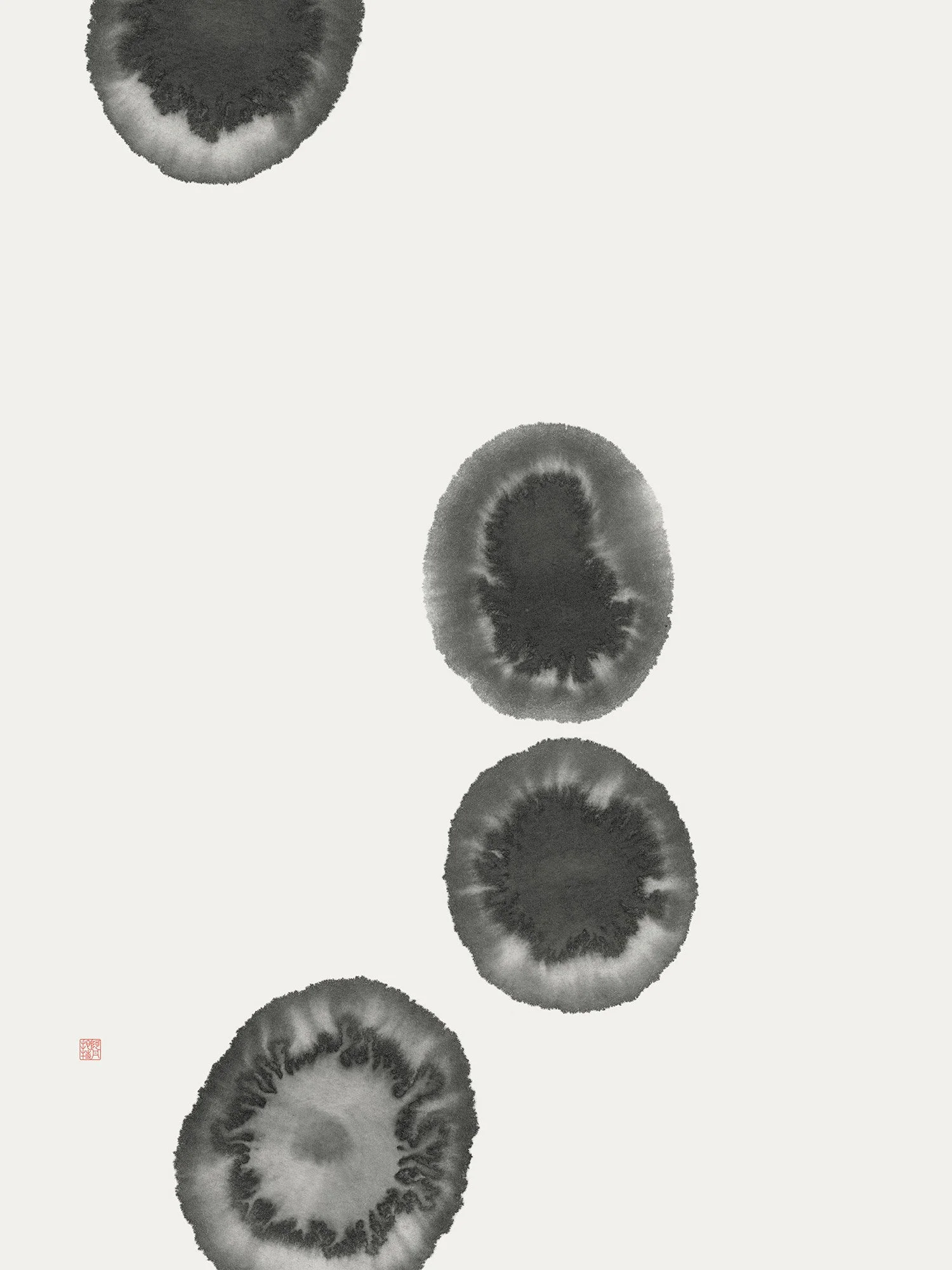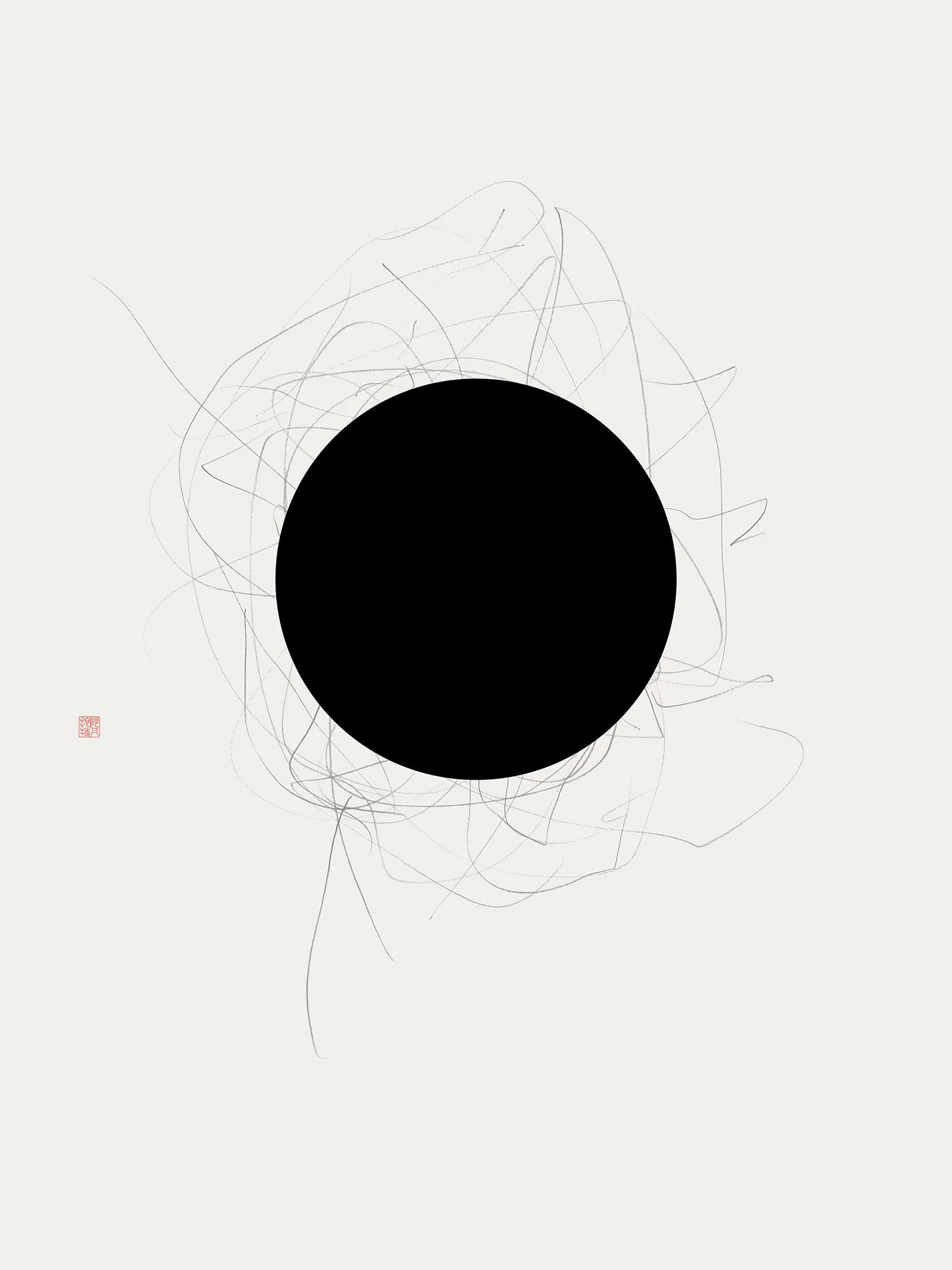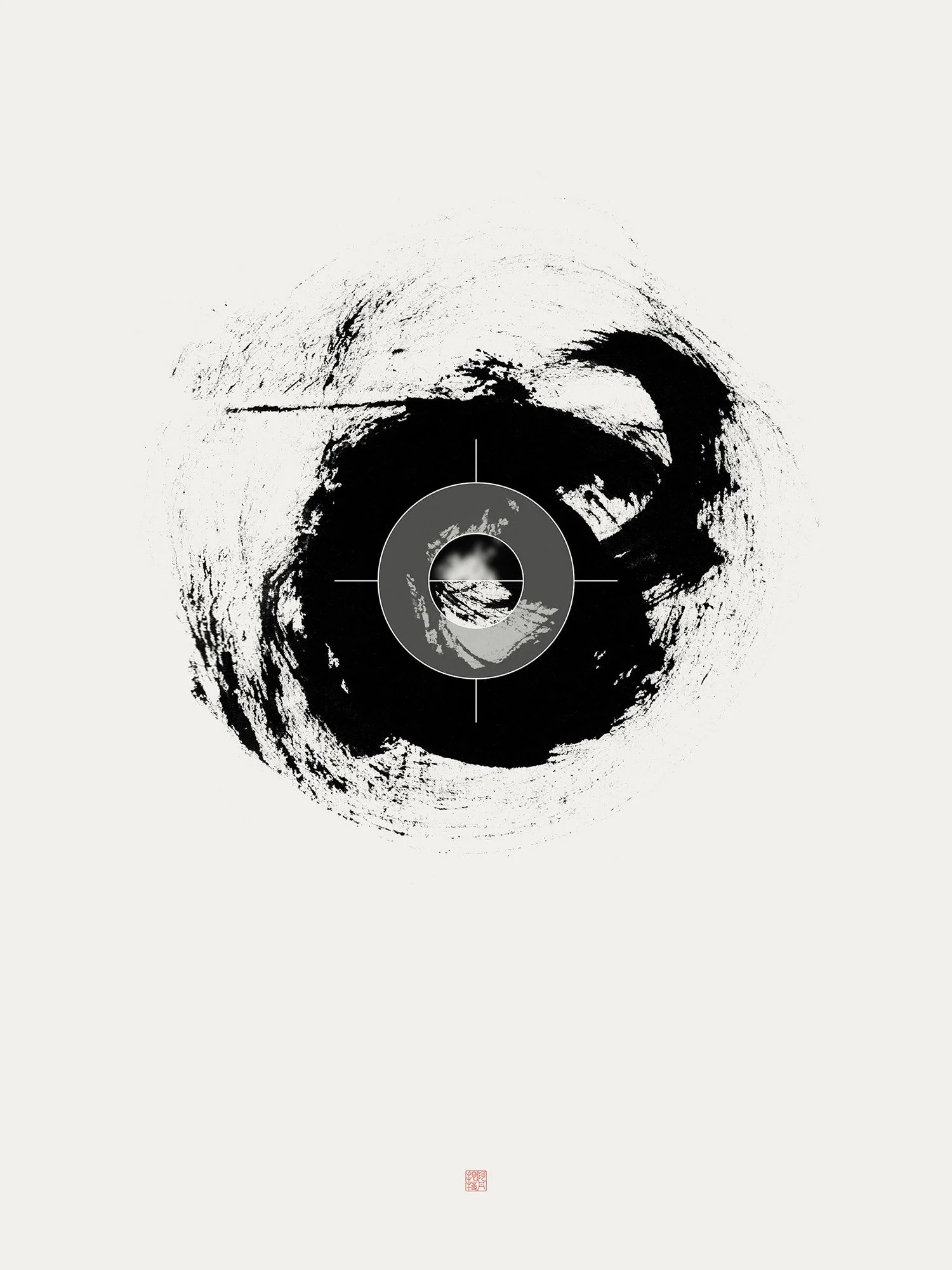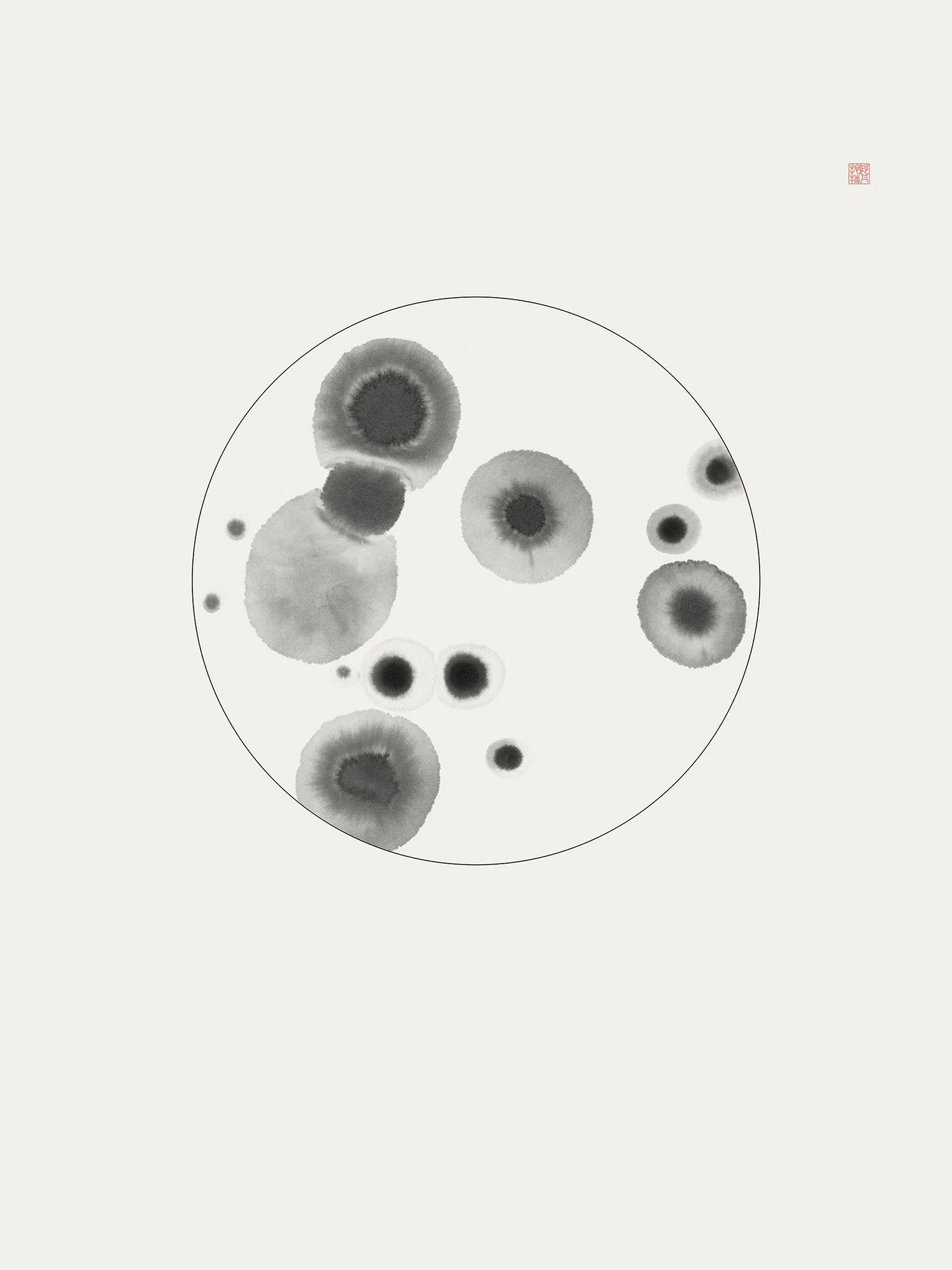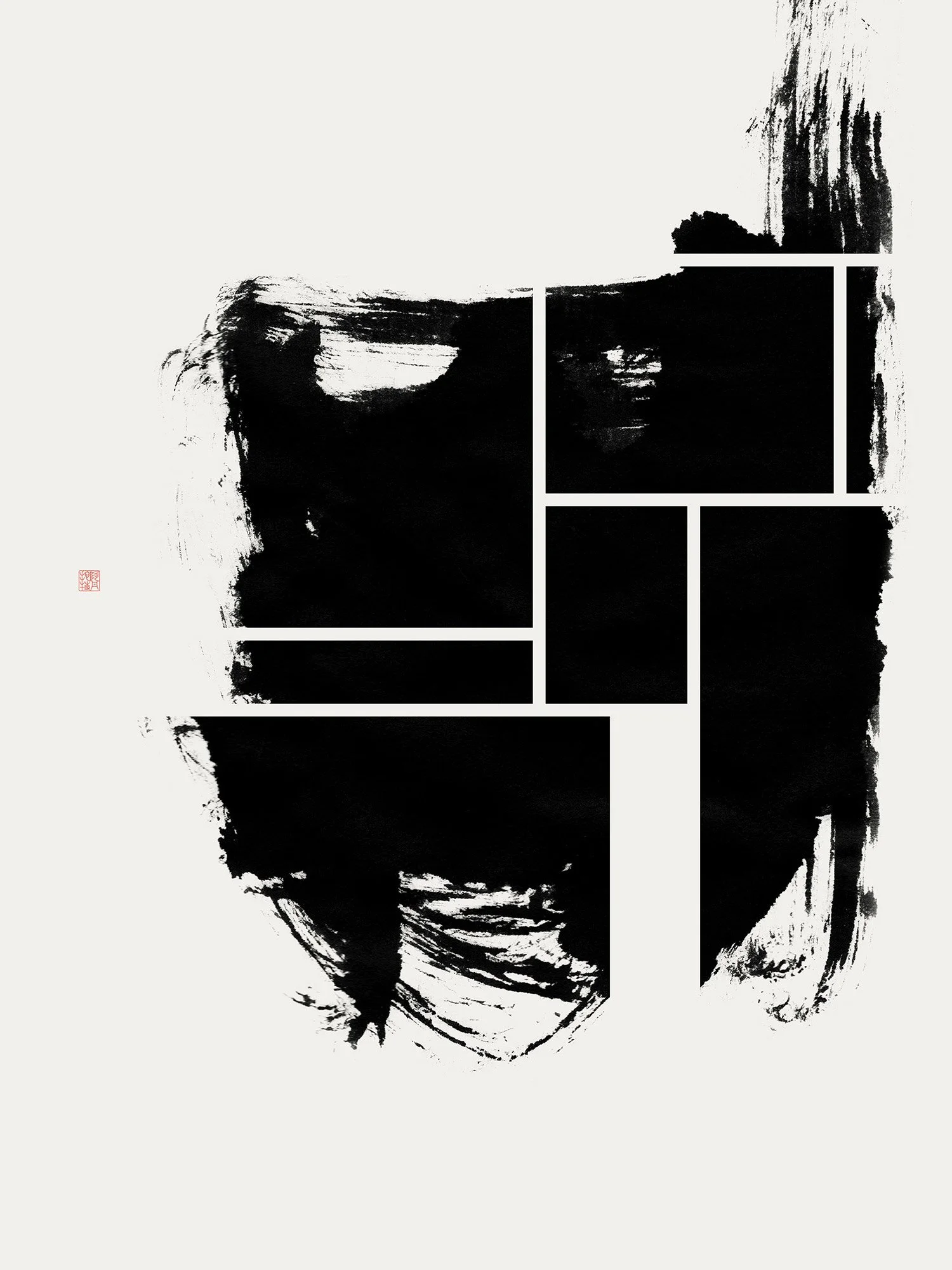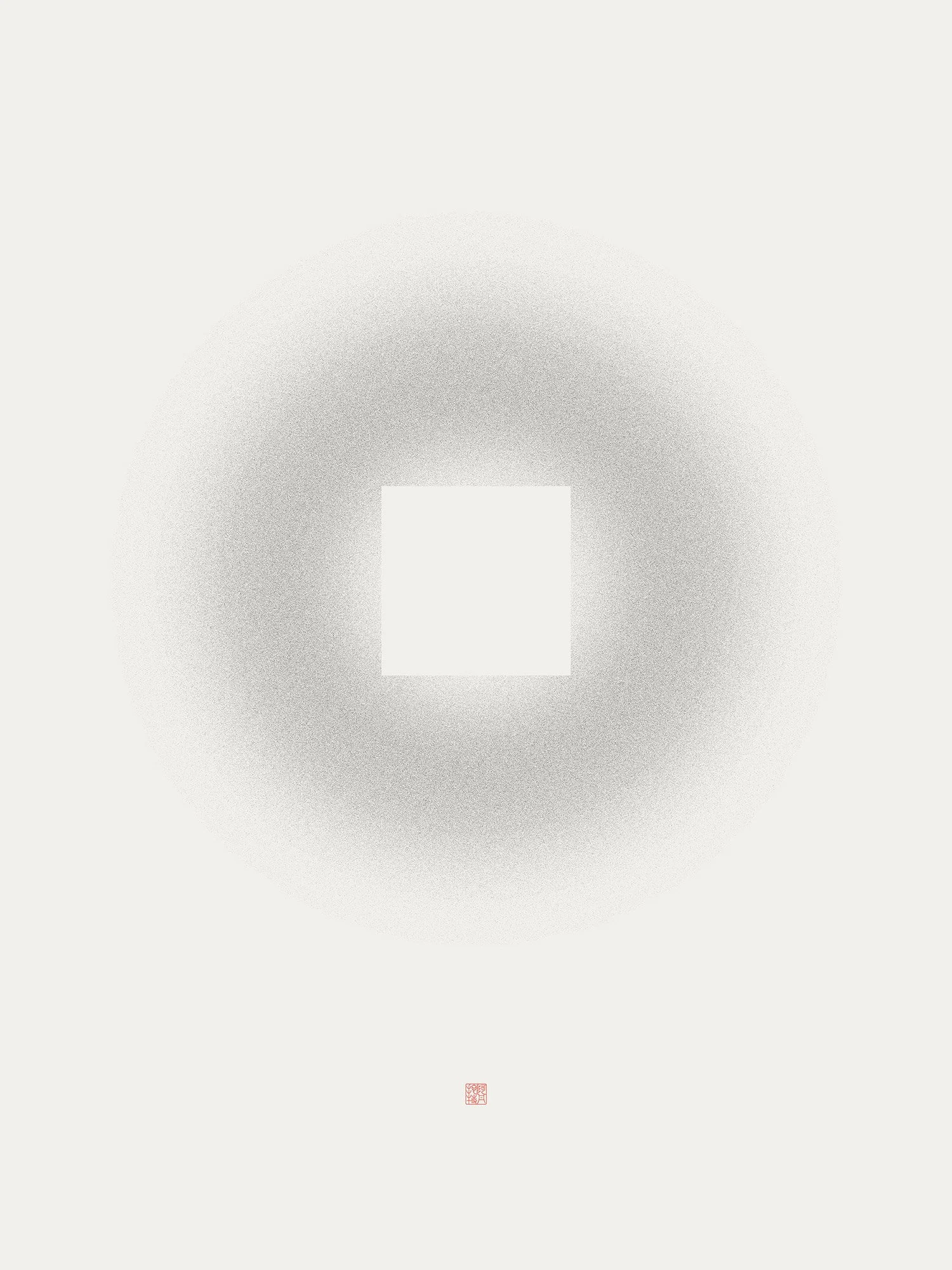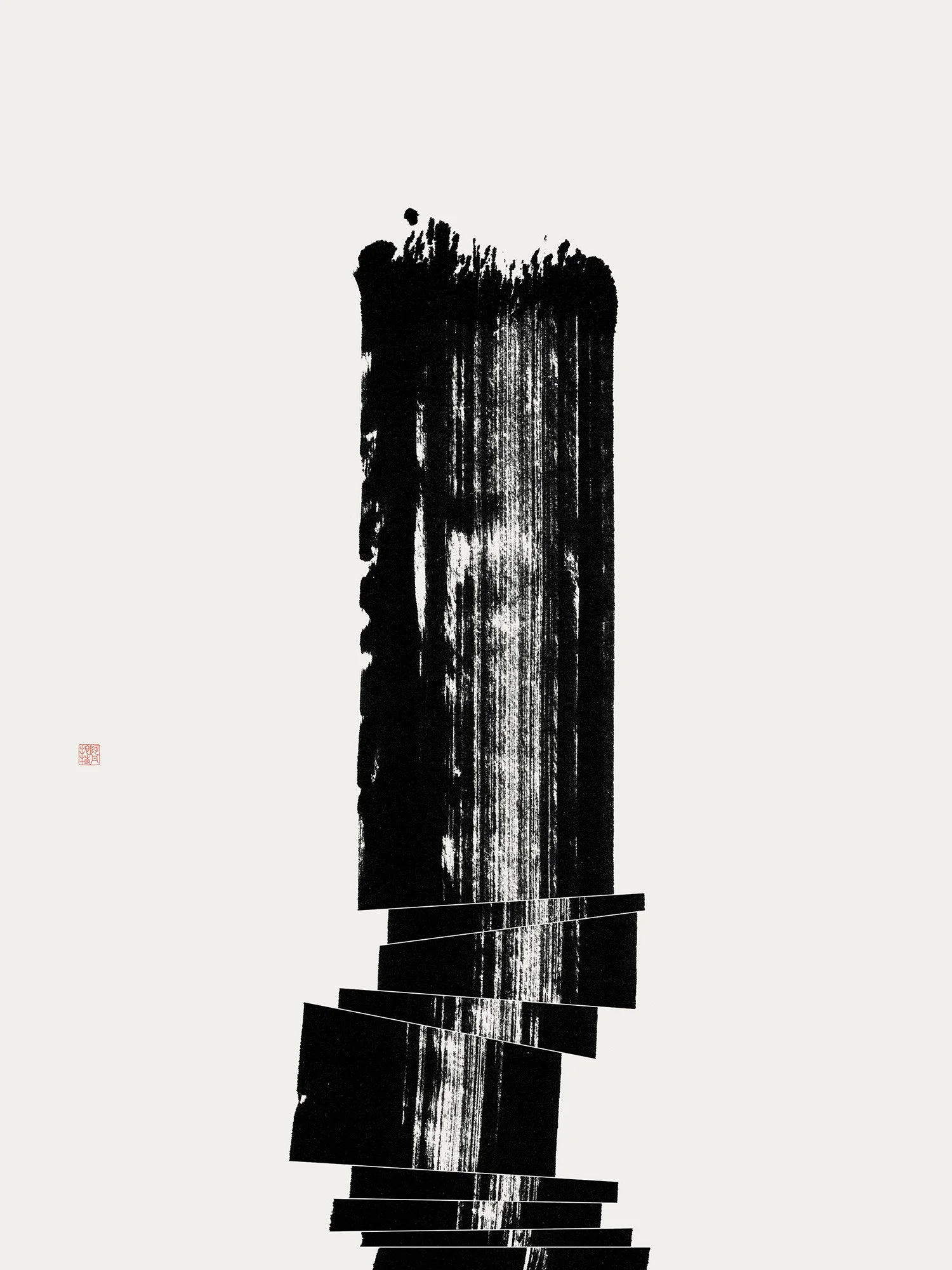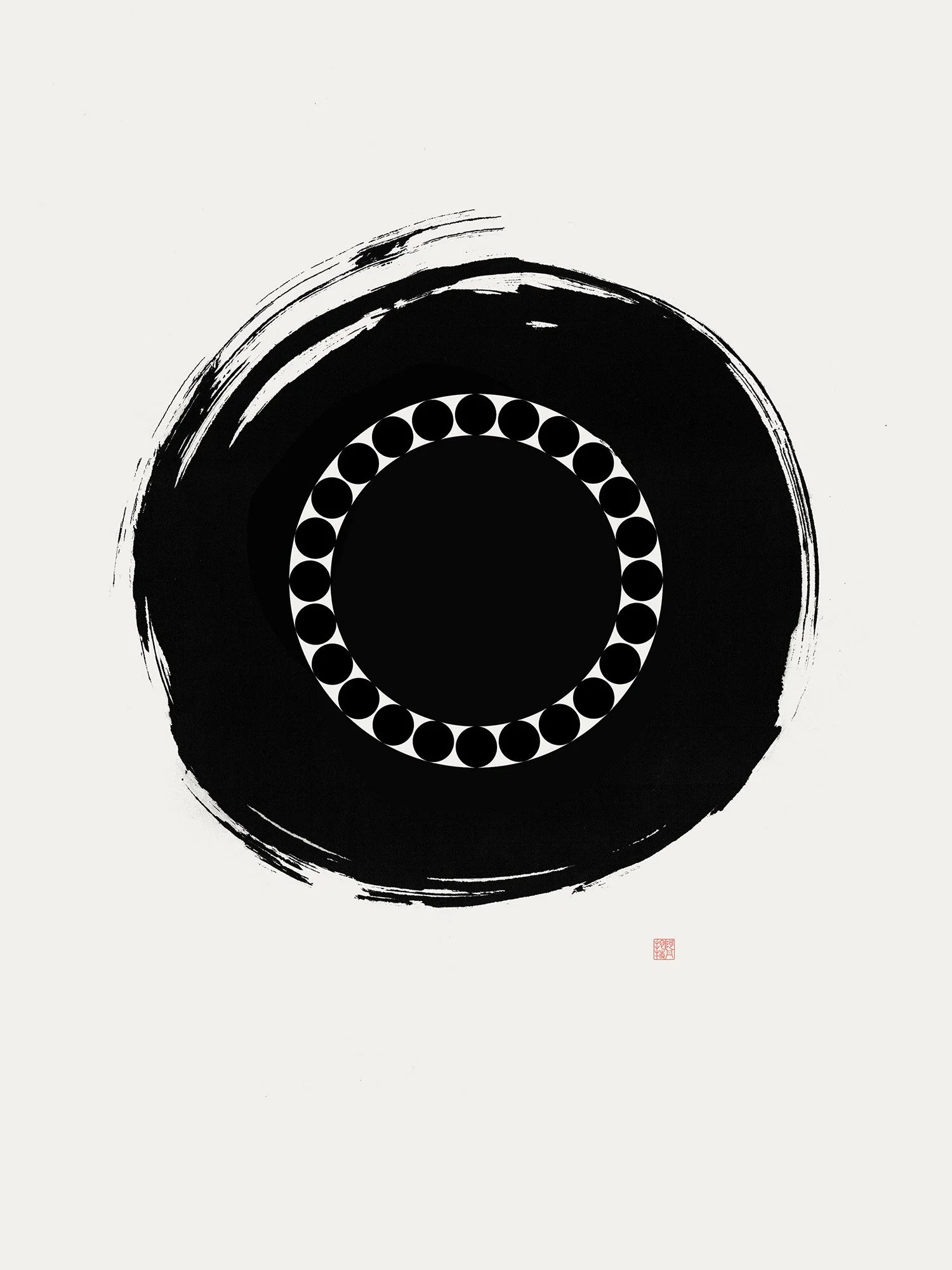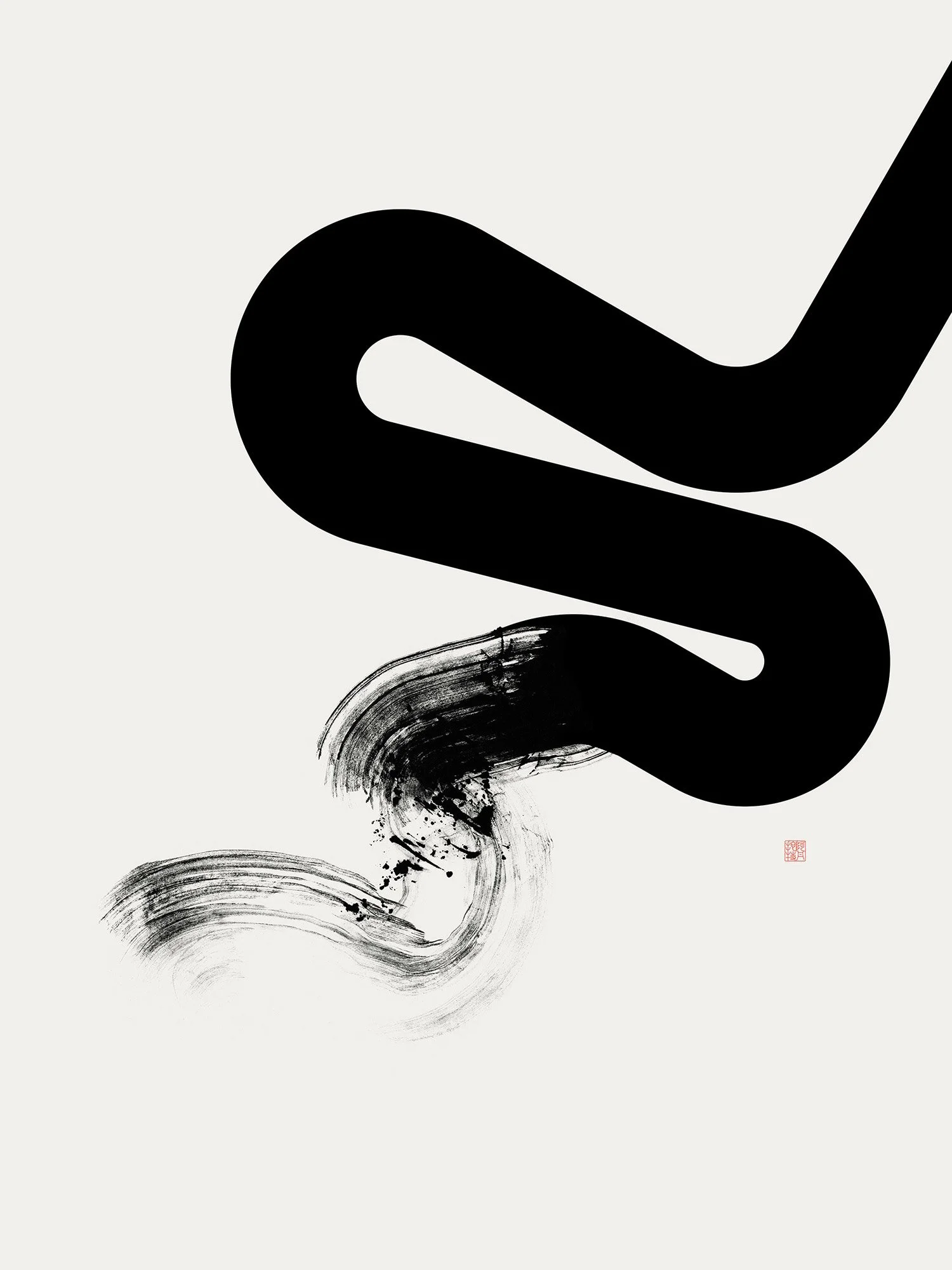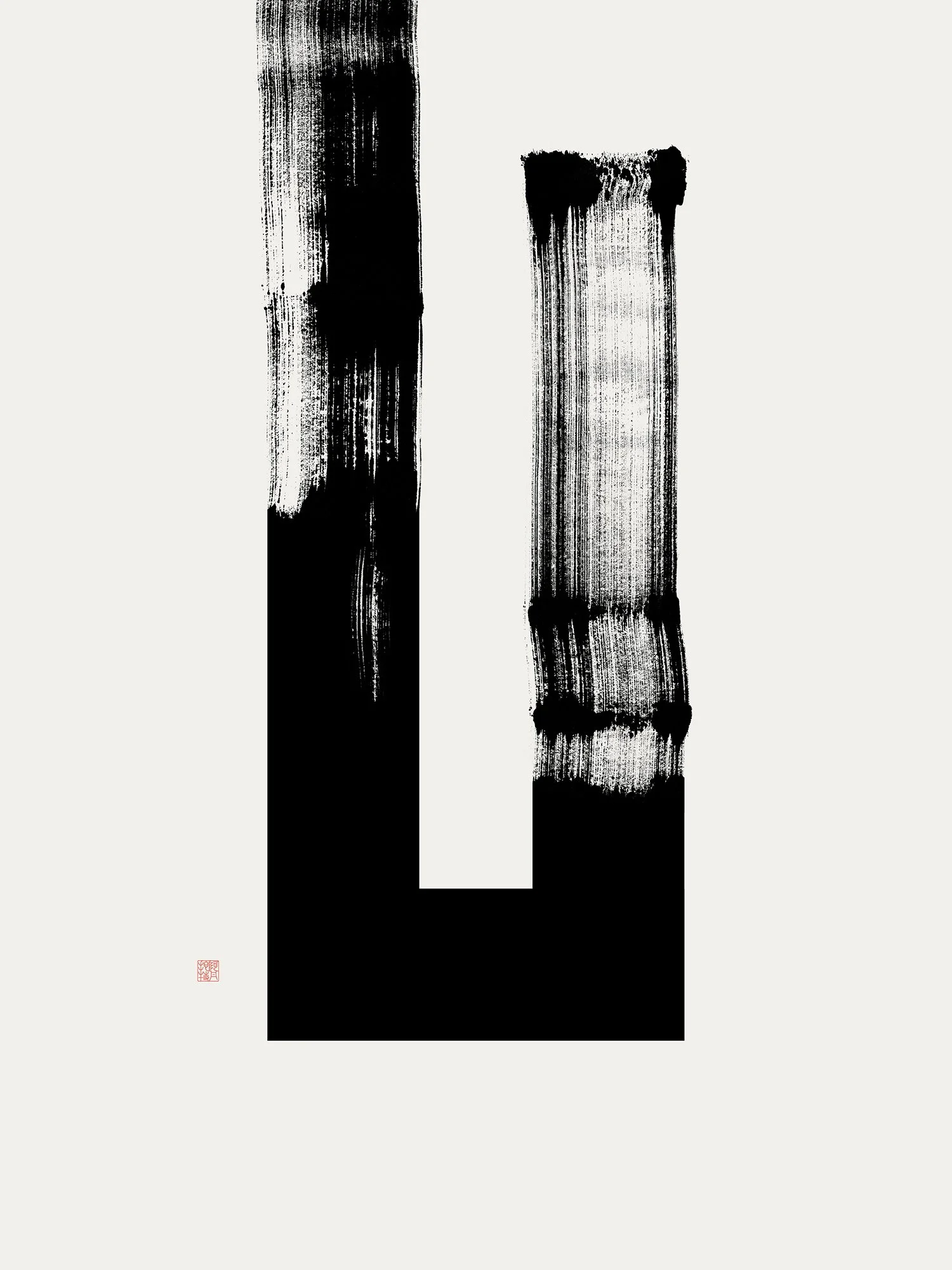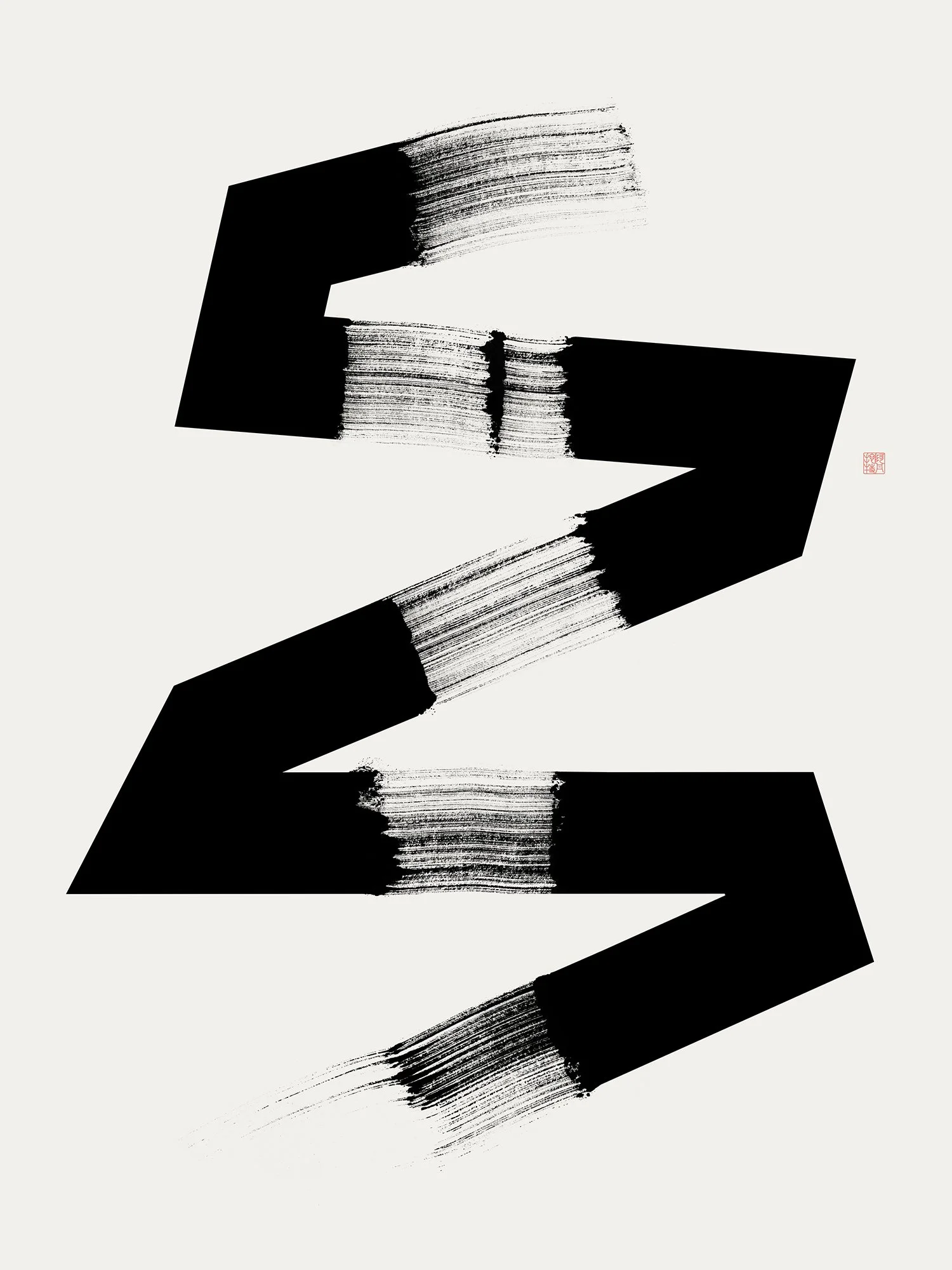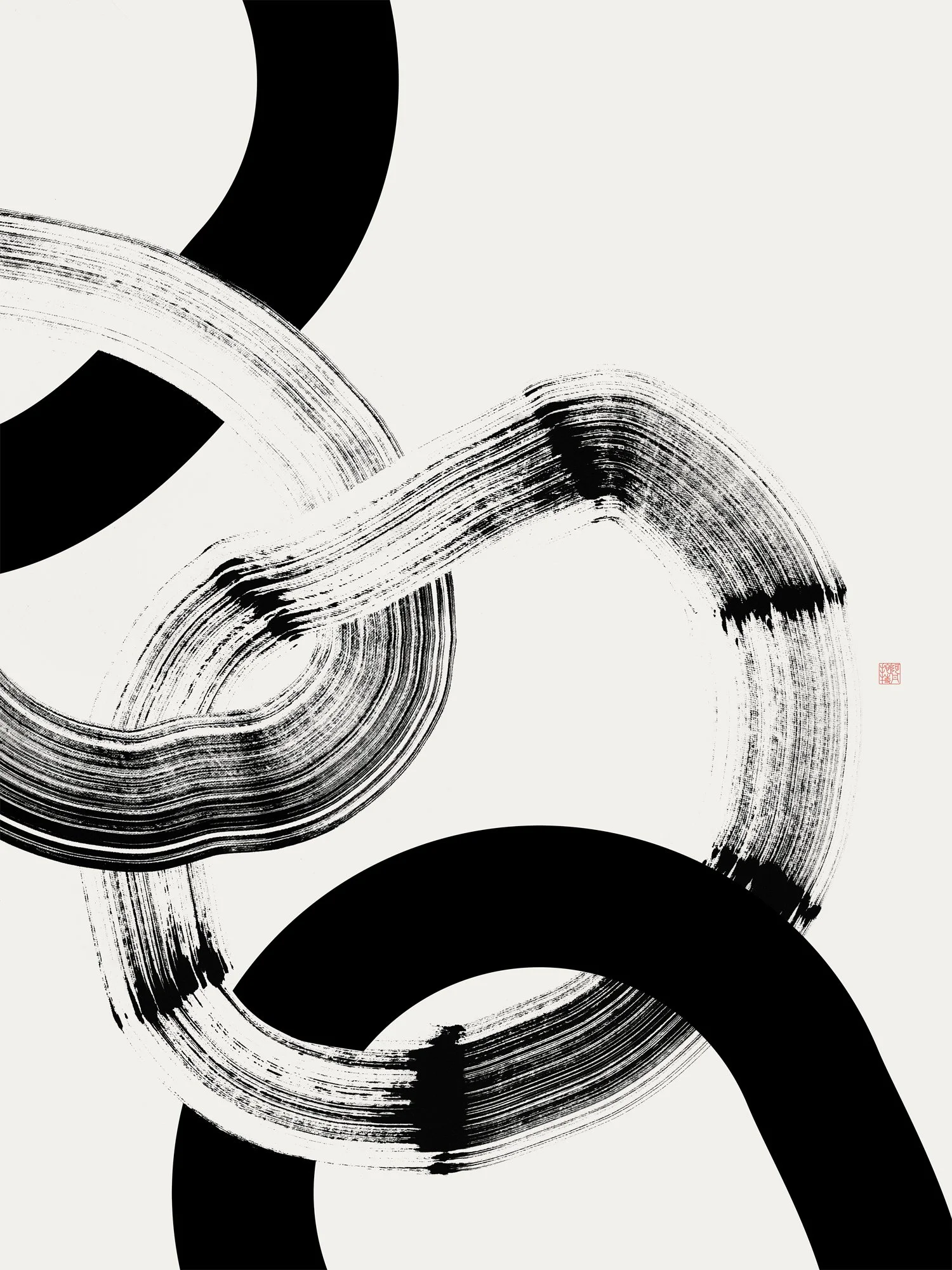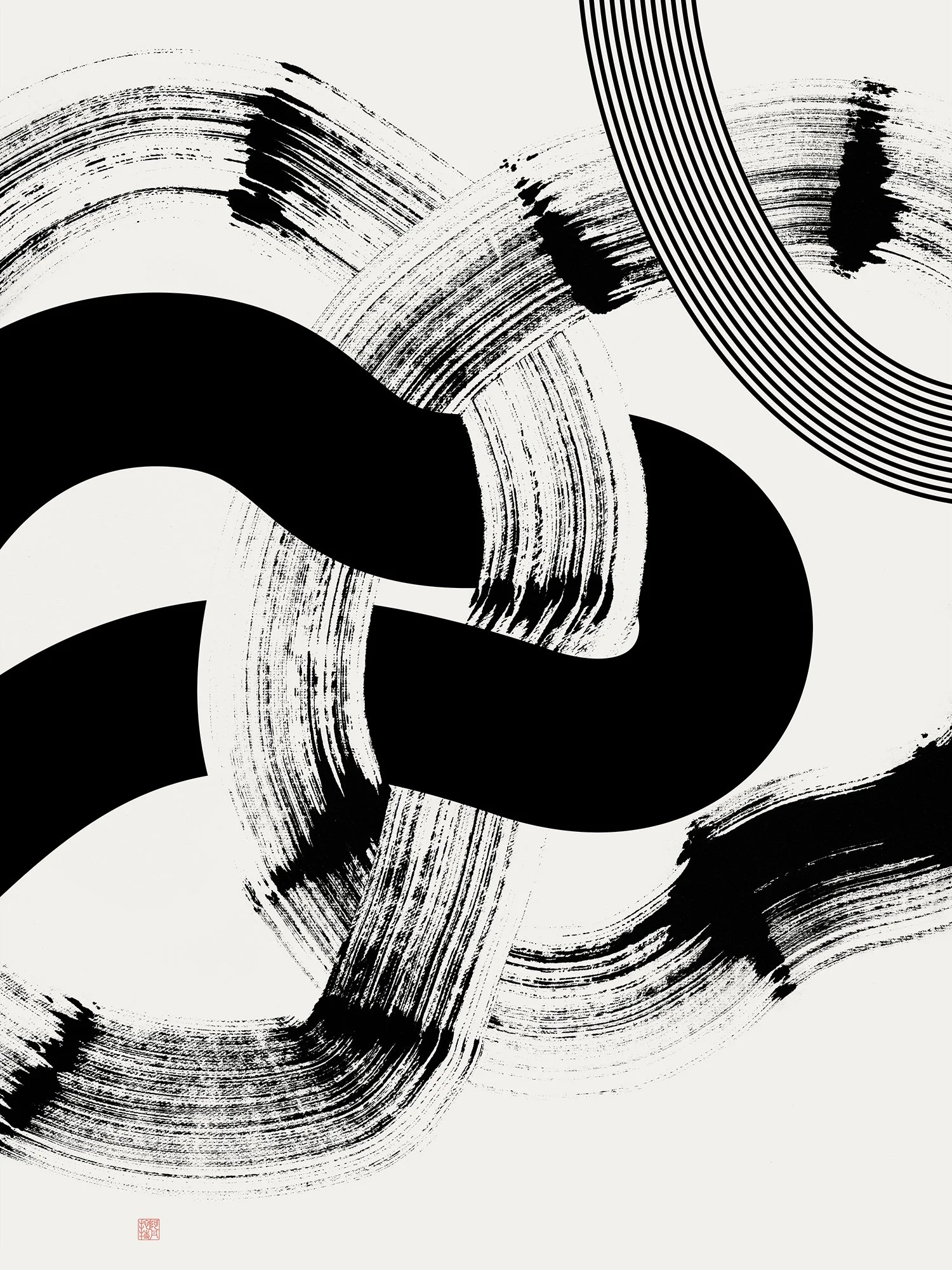

>
Life is to be in relations.
— Laozi –
<
—
minimal print series:
WEST MEETS EAST
In the West Meets East print series, Thoth explores the convergence of Western and Asian minimal aesthetics, crafting contemporary visuals that draw from both traditions while uncovering their shared artistic language. He particularly focuses on Japanese aesthetics and the minimalist graphic design tradition of his home country, Switzerland.
The 32 pieces in this collection oscillate between the two worlds, sometimes blending them, at other times highlighting their contrasts. Thoth restricts the palette to black and white, combining the fluidity of brushed Indian ink with the precision of computer-generated vector drawings. This disciplined approach mirrors the minimalist ethos of both traditions, emphasizing clarity, simplicity, and the power of negative space.
Through this series, Thoth examines what is unique to each tradition and what is universally understood across cultures. The result is a collection that not only bridges East and West but also invites broader contemplation on how minimalism transcends cultural boundaries, offering a shared space for reflection and connection.
Images below link directly to the related product page.
Union
Construction
As One
Broken Chain
Accidental Zen Garden N°1
Accidental Zen Garden N°2
Accidental Zen Garden N°3
Side Note : The three Zen Garden pieces clearly evoke the aesthetic of a Japanese Zen garden. While creating them, Thoth was also inspired by Christo’s ‘Surrounded Islands.’ He found it compelling to integrate ‘accidental’ elements, like ink spots, into these initially thoughtful and meditative compositions.
Abacus
Abacus : The ancient counting frame, Abacus, predates the adoption of the Hindu–Arabic numeral system in the Western world by centuries. Its origins trace back to Babylon between 2700–2300 BC, and it was also widely used in China (known as suanpan) and Japan (referred to as soroban).
Home
Home 4 2
Eclipse
#torii
Side Note : A torii is a traditional Japanese gate that symbolically marks the transition from the mundane to the sacred at Shinto shrines. While working on this piece, Thoth found himself torn between using a hashtag symbol or the torii shape. He realized the artwork needed to be both and neither, embodying the essence of both symbols. Just as a torii signifies the entrance to a sacred space, a hashtag (#) serves as a key to a specific digital world – a concept that felt perfectly aligned to him.
The Rings Of Suminagashi
The Rings of Suminagashi : The title of this piece might sound like a fantasy novel, but Suminagashi is actually a traditional Japanese marbling technique, where sumi ink floats on water in concentric rings. The process is similar to the Western art of paper marbling, known as ‘ebru.’ Inspired by the distinctive Suminagashi patterns, Thoth created this piece using brushed sumi ink and vector drawings.
Addition
Target
Target : What would a minimal, Zen-inspired series be without a nod to the art of Zen archery? In this piece, Thoth encapsulates the essence of concentration, targeting, and release. The artwork is also suitable for visual meditation practices.
Growth
New Life
The Beauty Of Age
Side Note : ‘Beauty lies in the eye of the beholder,’ as the saying goes. While society often links beauty with youth, Thoth reflects on the wisdom found in nature, like the rings of a tree. The more rings, the better — each representing age, strength, and beauty.
Equilibrium
Touch Down
Side Note : Thoth didn’t initially intend to create a diptych, but when he saw Equilibrium and Touch Down together, they harmonized as if they were meant to be a pair. Of course, they can also be displayed separately.
Atoll Island
Hiding Chaos
Hiding Chaos : This piece delves into the concept that the universe was born from the conflict between order and chaos, raising questions about their true nature. Is what we perceive as structure actually chaos? Could a destructive black hole be creating order? Thoth explores these themes, inviting viewers to ponder the complexity of a universe that remains largely beyond our understanding.
Perforation
The Beginning Of Duality
Side Note : A circle is a universal symbol for oneness, unity, eternity, and the cycle of life. Thoth notes that as soon as a circle expands or contracts, it transforms into an ellipse, marking the transition from oneness (a circle defined by a single center point) to duality (an ellipse defined by two center points).
Moon Bridge
Moon Bridge : A Moon Bridge, commonly found in Chinese and Japanese gardens, features a highly rounded arch that, when reflected in the water below, forms a perfect circle symbolizing the moon. To Thoth, the two halves of the circle represent consciousness and subconsciousness, inseparably linked.
Focus
Petri Dish
Deconstruction
Side Note : Penicillin, the first antibiotic, was discovered by accident in 1929 when Alexander Fleming noticed that mold, which had contaminated a bacterial culture in a Petri dish, had killed the bacteria around it. This discovery reflects the beauty of unintended consequences—an idea that resonates in Thoth’s work.
Cash (錢 / Chinese Coin)
Cash : Cash refers to traditional Chinese coins, characterized by their round outer shape and a square center hole, symbolizing the unity of heaven and earth (Yin and Yang). Today, these coins are often seen as good luck charms. Thoth reflects on the concept of money as a material and transcendental relationship, where its value is no longer tied to the physical object. He reinterprets the traditional cash coin as a volatile cloud with an empty, square hole, symbolizing the shift from tangible currency to virtual numbers.
Shifting Balance
Shifting Balance : In Shifting Balance, Thoth explores the idea that after any change, no matter how small, we can never return to a previous status quo. Every influence shifts paradigms, forcing us to adapt. In this sense, we are always the sum of our experiences, just like the brushstroke in this piece — fragmented, rearranged, and striving to regain balance
Ball Bearing
The Race
Linear Story N°1
Linear Story N°2
Linear Story N°3
A line is a dot that went for a walk.
— Paul Klee —
Linear Story N°4
Linear Story N°5
Linear Story N°6

